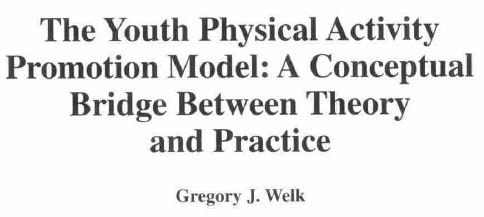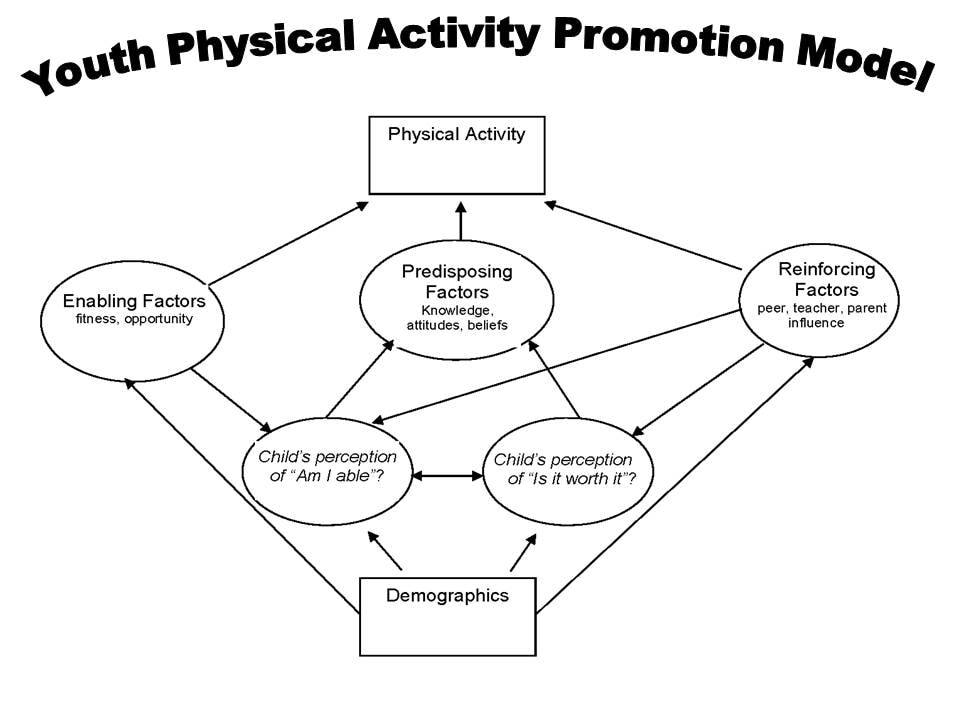Development and Validation of the Children's Physical Activity Correlates (CPAC) Survey
Theoretical Foundation
|
The Children's Physical Activity Correlates (CPAC) survey was developed based on the foundation from a conceptual framework called the Youth Physical Activity Promotion (YPAP) model. The model sought to integrate different theoretical constructs within a model that could more effectively guide planning of youth activity programming. Following the established Precede Proceed planning model, the paper classified influences into Predisposing, Enabling and Reinforcing factors. Predisposing factors are viewed as the central influence and two specific constructs were proposed (Is it Worth it? and Am I Able?). The two constructs were operationalized using the Children's Attraction to Physical Activity (CAPA) instrument developed by Bob Brustad and the established Perceived Competence scale developed by Susan Harter.. Subsequent work tested refined versions of the instruments and they have been collectively combined within the CPAC instrument. Details are in the papers below.
|
References
- Bai, Y., Allums-Featherston, K., Saint-Maurice, P. F., Welk, G. J., & Candelaria, N. (2018). Evaluation of Youth Enjoyment Toward Physical Activity and Sedentary Behavior. Pediatric exercise science, 30(2), 273-280.
- Bai, Y., Chen, S., Vazou, S., Welk, G. J., & Schaben, J. (2015). Mediated effects of perceived competence on youth physical activity and sedentary behavior. Research Quarterly for Exercise and Sport, 86(4), 406-413
- Chen, S., Bai, Y., Welk, G., Vazou, S., & Schaben, J. (2015). Measurement and invariance characteristics of psychosocial correlates of youth physical activity. Journal of Science and Medicine in Sport, 18(2), 172-177
- Schaben, J. A., Welk, G. J., Joens-Matre, R., & Hensley, L. (2006). The predictive utility of the children’s physical activity correlates (CPAC) scale across multiple grade levels. Journal of Physical Activity and Health, 3(1), 59-69
- Welk, G.J., & Schaben, J. (2004). Psychosocial correlates of physical activity in children – A study of relationships when children have similar opportunities to be active. Measurement in Exercise Science and Physical Education, 8(2): 63-81.
- Welk, G.J.; Wood, K. & Morss, G. (2003). Parental influences on physical activity in children: An exploration of potential mechanisms. Pediatric Exercise Science, 15, 19-33.
- Welk, G.J. (1999). The Youth Physical Activity Promotion Model: A conceptual bridge between theory and practice. Quest, 51, 5-23.
Link



